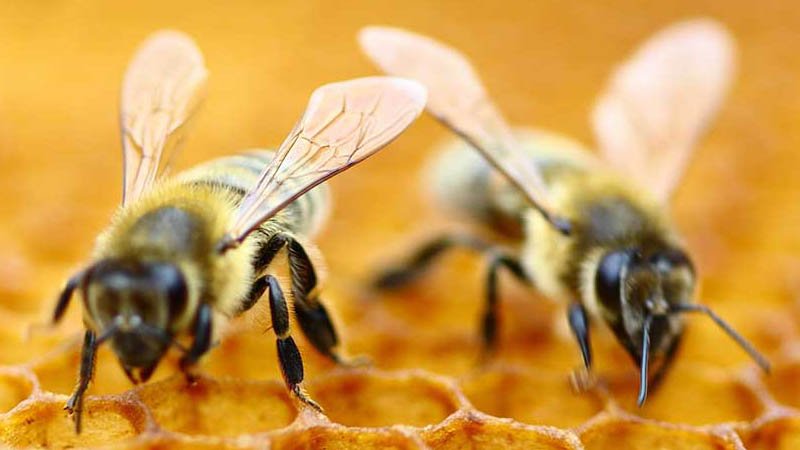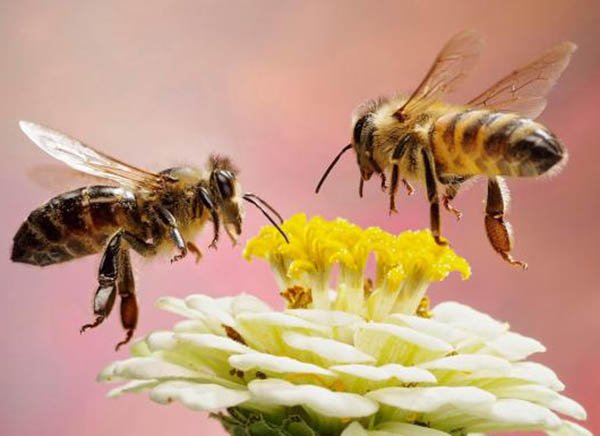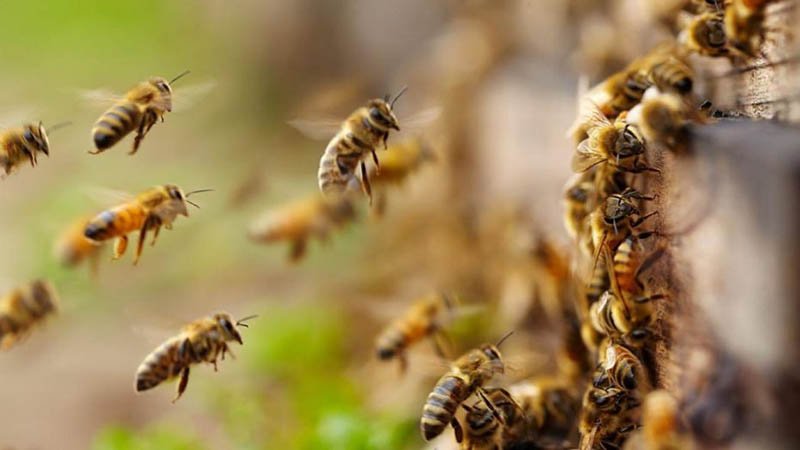
Talk about being codependent. Is there a better example of two species more reliant on each other than people and honey bees?
Each depends on the other for its very existence. People rely on honey bees to pollinate agricultural crops. The bees, which have been domesticated for thousands of years and kept as livestock for the past several decades, depend on people to manage colonies in the face of declining habitat and exposure to parasites.
 Suffice to say, without the other, each faces a grim future. Some bee experts, however, are hopeful that in time bee populations could develop resistance, either naturally or through selection, to parasites that threaten to wipe out domesticated colonies every year. They also say there are easy ways for golf course superintendents to provide natural food sources that bees find irresistible.
Suffice to say, without the other, each faces a grim future. Some bee experts, however, are hopeful that in time bee populations could develop resistance, either naturally or through selection, to parasites that threaten to wipe out domesticated colonies every year. They also say there are easy ways for golf course superintendents to provide natural food sources that bees find irresistible.
There are about 20,000 bee species found worldwide. About 5,000 of those are found in North America. Many species worldwide already are extinct.
The varroa mite that parasitizes European honey bees across the U.S. is an invasive species in North America. The tiny bug, also known as the varroa destructor, feeds on the bee's fat deposits. The weakened bee becomes susceptible to diseases, like deformed wing virus, that can wipe out entire colonies. It was introduced to European bees more than 100 years ago when Russians brought that species to eastern Asia. After jumping species, the mites have been plaguing bee colonies in the U.S. since the 1980s, said Ohio State University entomologist Reed Johnson, Ph.D., an expert in apiculture and pollinator toxicology.
Research indicates that European bees in other parts of the world have begun to slowly develop resistance to the varroa mite during the past 100 years.
"European bees have developed some resistance, and there is work taking place to develop that resistance in the U.S. That is a promising avenue," Johnson said. "If that happened here, that would be wonderful."
Johnson believes that if left alone, bees probably could develop resistance to the varroa mite over the next several years. Agricultural needs, however, make that impossible.
"They would develop good, strong resistance to mites, and they could do that through selection," Johnson said. "We would probably see a rebound in their numbers within a decade. If we all could give up using them for a decade, it's likely their problems would be solved. But we can't do that, the agriculture industry depends on them too much."

The number of bee colonies being raised on golf courses is a mere drop in the bucket of the domesticated bee population of 2.6 million colonies, Johnson said. Most of those colonies spend much of the year being trucked around the country to pollinate food crops. For example, 2.1 million colonies are sent each year to California just to pollinate the state's almond crop. That practice is a constant source of stress for bees, which, except for the queen, only live about six weeks anyway.
"Bees are a big deal and they're big business. There is big money in commercial pollination," Potter said. "Travel is stressful, they're confined together on trucks. It affects their immune system and makes them more susceptible to disease.
"There is an opportunity to get on the right side of this issue."
Other threats include pesticides, including neonicotinoids, and researchers at the University of Texas suggest that glyphosate affects the bee's natural ability to produce beneficial bacteria, and adversely affecting its immune system. On May 20, the EPA canceled registration on a dozen neonicotinoids that all include the active ingredients chlothianidin or thiamathoxam.
There are opportunities for golf course superintendents and others to help bee populations that fall short of establishing hives on the property, said University of Kentucky entomologist Dan Potter, Ph.D., recipient of the 2010 USGA Green Section Award and the architect of the first Operation Pollinator project in the U.S.
Something as simple as planting clover can provide much-needed habitat for bees, which can travel several miles in search of pollen. And when they find a field they like they have a special dance that tells other bees the direction of the field's location in relation to the sun and its distance from the hive.
"Honey bees are very choosy," Johnson said. "There are particular plants they go to.
"It sounds simple, but clover is an incredibly important plant. The more we get out there, the better it will be for the bees."
Out-of-play areas on golf courses provide a natural food source without the commitment of establishing colonies. Linden trees also are a favorite food source for bees.
"Any superintendent worth his salt is not going to allow spray drift onto roughs and they're not typically spraying clover," Potter said.
"The EPA is going to take a close look at these pesticides that might or might not affect bees. If we use them, and not use them in a crazy way, we can still have a pleasant space in our back yards and on our golf courses and make it hospitable to urban wildlife and pollinators."

